Trees and shrubs bring a ton of benefits to your commercial property in Northeast Ohio.
They add color and greenery that people can enjoy as they shop at your retail center or work at your office park. They can ease the nerves and worries of your hospital patients and stressed out healthcare workers. They can bring color and texture to your educational facility or homeowners’ association grounds.
And in all of these commercial property types, trees and shrubs bring a bevy of benefits. Placed correctly and maintained well, they can lower energy bills, manage stormwater by reducing erosion and flooding, sequester carbon, and provide food and shelter for wildlife. Trees and shrubs can even increase spending at your retail center or boost recruitment and retention at your multifamily property. 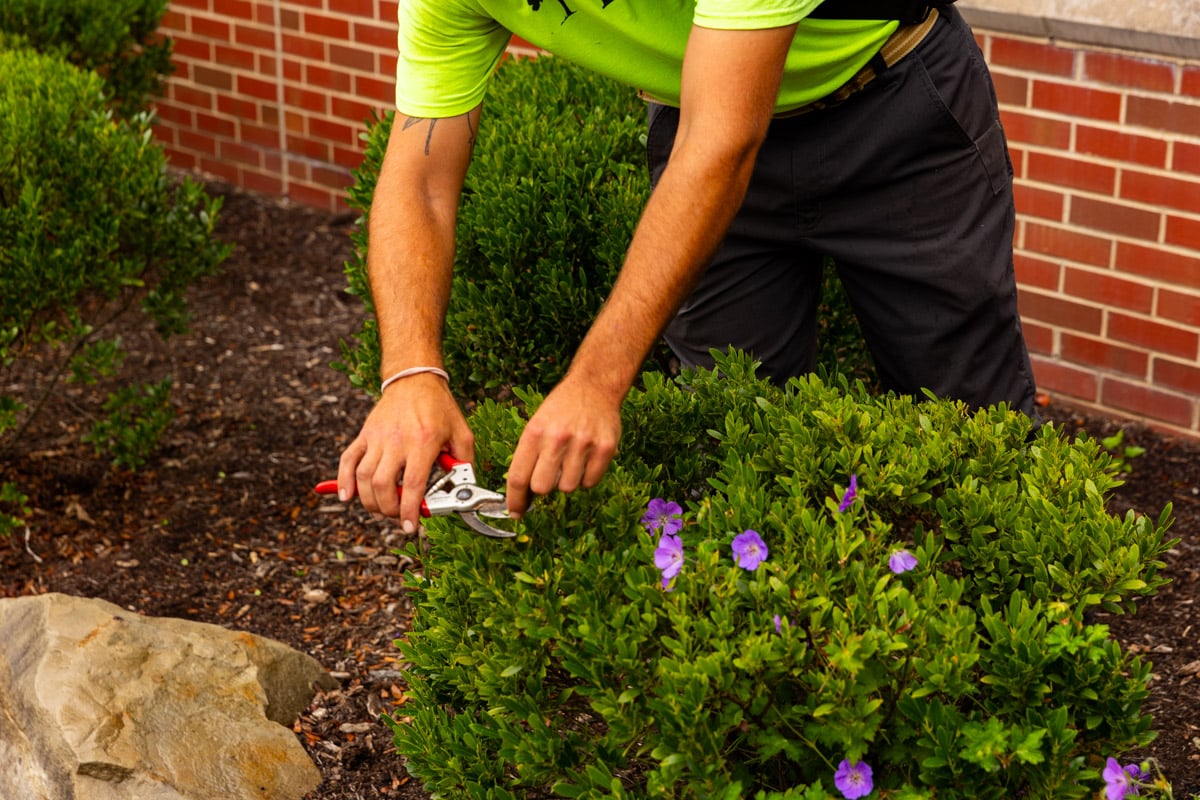
To continue providing these benefits as the major attractions on your commercial landscape, you must keep your trees and shrubs healthy and strong.
In addition to proper water and fertilization, your trees and shrubs require regular pruning. There are trimmings that occur during the growing season to keep plants tidy and remove any dead, dying, or broken branches. But there is also another service that can help your trees and shrubs maintain good health: dormant pruning.
Let’s look at commercial property dormant pruning and discuss the pros and cons of the service so you can best understand its purpose and many benefits.
Dormant Pruning in Northeast Ohio
You might know what tree and shrub pruning or trimming is, but you might be wondering what dormant pruning is and how it can help your Northeast Ohio commercial property appearance.
Here, we’ll dive deeper into the dormant pruning service so you can better understand it and how it can help your commercial landscape.
What is Dormant Pruning?
Dormant pruning is similar to maintenance pruning except that the work is done when the plant is dormant.
This timing helps reduce the amount of stress the plant experiences. As a result, dormant pruning can often be more aggressive where your commercial grounds maintenance professional can make larger cuts.
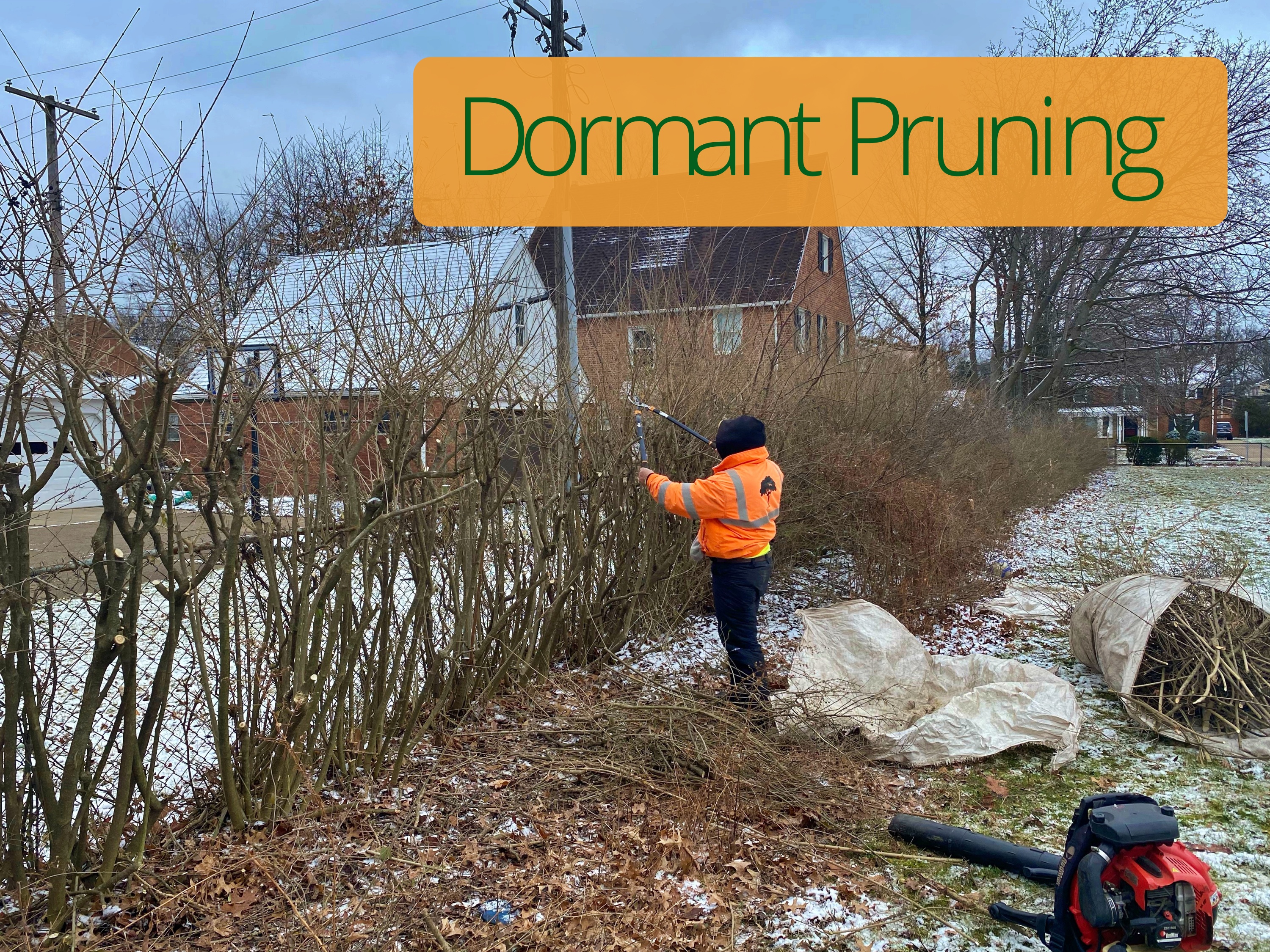
What Does Dormant Pruning Do For Your Trees & Shrubs?
Dormant pruning leads to more vigorous growth in the spring, leading to healthier overall trees and shrubs.
You can train trees by scaffolding the branches during dormancy. This can help eliminate weak crotch angles or rubbing branches, further enhancing overall tree health.
Another strategy your tree care professional may try during dormancy is thinning the tree or shrub to open up its form or canopy, allowing light and air to circulate. Thinning helps reduce the overall size of the plant since you can remove as much as one-third of it at any one time. As a technique, thinning also encourages healthy internal growth during the next growing season.
For your plants, dormant pruning can help reduce vastly overgrown plants and force new growth to rejuvenate them. This process can take some time, however – roughly 2 to 3 years – to complete, but it costs much less than having to remove the plants and re-landscape an area. Shrubs that respond well to this technique include spirea, privet, taxus, forsythia, lilac, burning bush, and viburnum. Trees that tolerate this practice include crabapples and cherries.
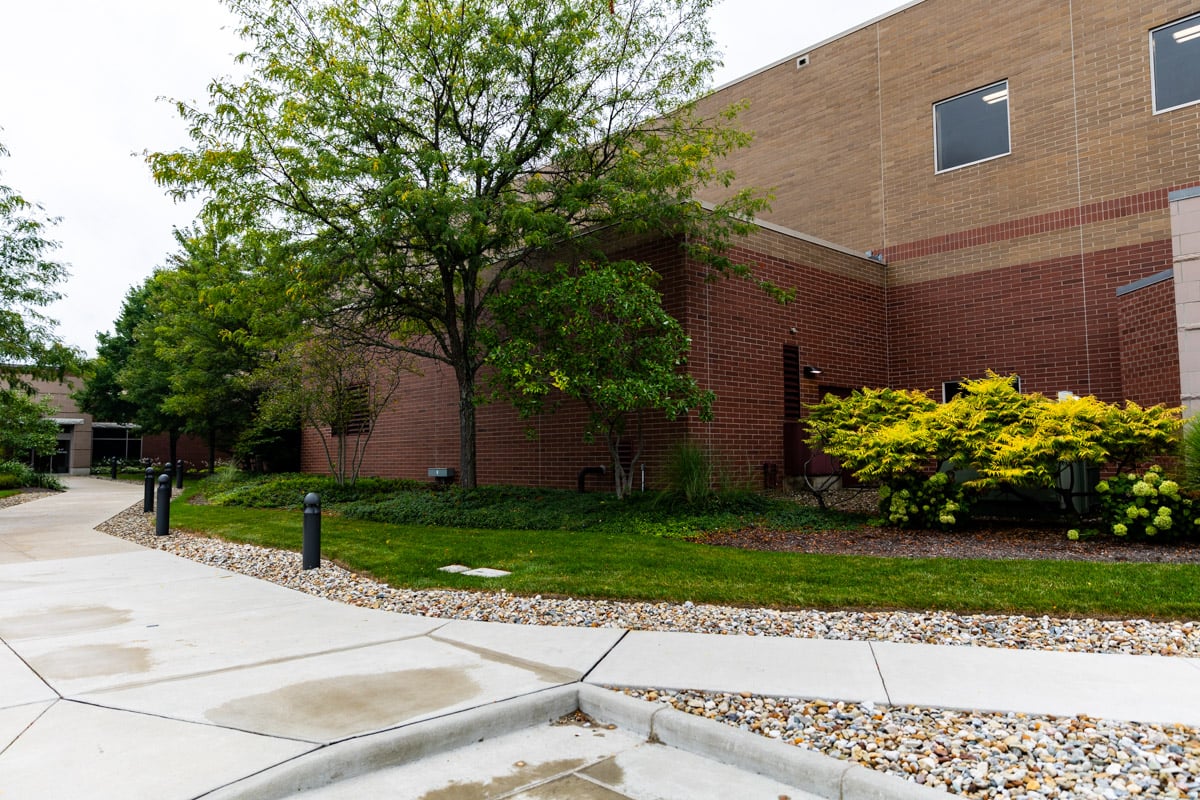
How Do Plants Respond to Dormant Pruning?
While all of these dormant pruning results sound promising, you might be wondering how this method of pruning for winter actually causes plants to respond.
For deciduous plants, dormant pruning removes the oldest branches at ground level or from inside the plant to open it up and reduce its overall size. Many shrubs flowering from new wood respond very well to dormant pruning, becoming healthier and producing vigorous blooms.
For evergreen plants, which don’t respond well to pruning in general, narrow-leaf and broadleaf evergreens are great candidates for dormant pruning. When pruning an evergreen, holes are created in the canopy to allow light to reach the internal branches. This prevents the plant from becoming excessively woody and reduces insect, disease, and possible weather damage.
Dormant pruning can help both plants recover from any damage caused by previous shearing incidents. 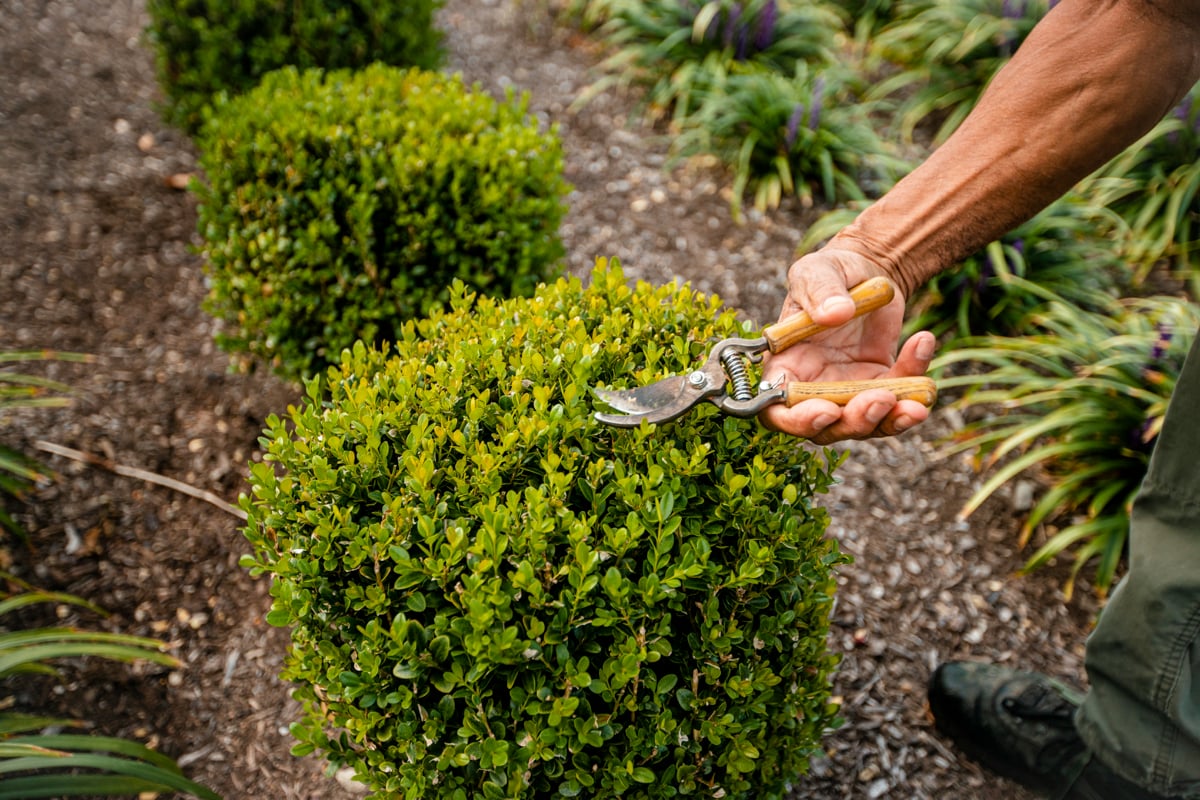
When Should Dormant Pruning Be Done On A Northeast Ohio Commercial Property?
Turfscape usually performs commercial property dormant pruning from late November through mid-March.
This time of natural hibernation allows us to prune with great detail without jeopardizing the health and vitality of the plants.
The Major Benefits of Dormant Pruning
Now that you know what dormant pruning is and how it works, let’s review some of the key benefits of commercial property dormant pruning.
First, pruning in winter when the leaves are off of the plants makes it much easier to see what you’re doing while trimming. You can see crossing branches and other issues clearly. This also helps you thin the plant out properly.
Second, dormant pruning allows for more robust growth in spring. This helps improve the overall look of your winter landscape, as well as your spring landscape.
Third, pruning in winter means you can do the work while fewer insects and diseases will take advantage of those open wounds before they heal. This saves the plant from suffering any other issues.
Fourth, dormant pruning can create a safer commercial site by eliminating weak branches that can be liability risks.
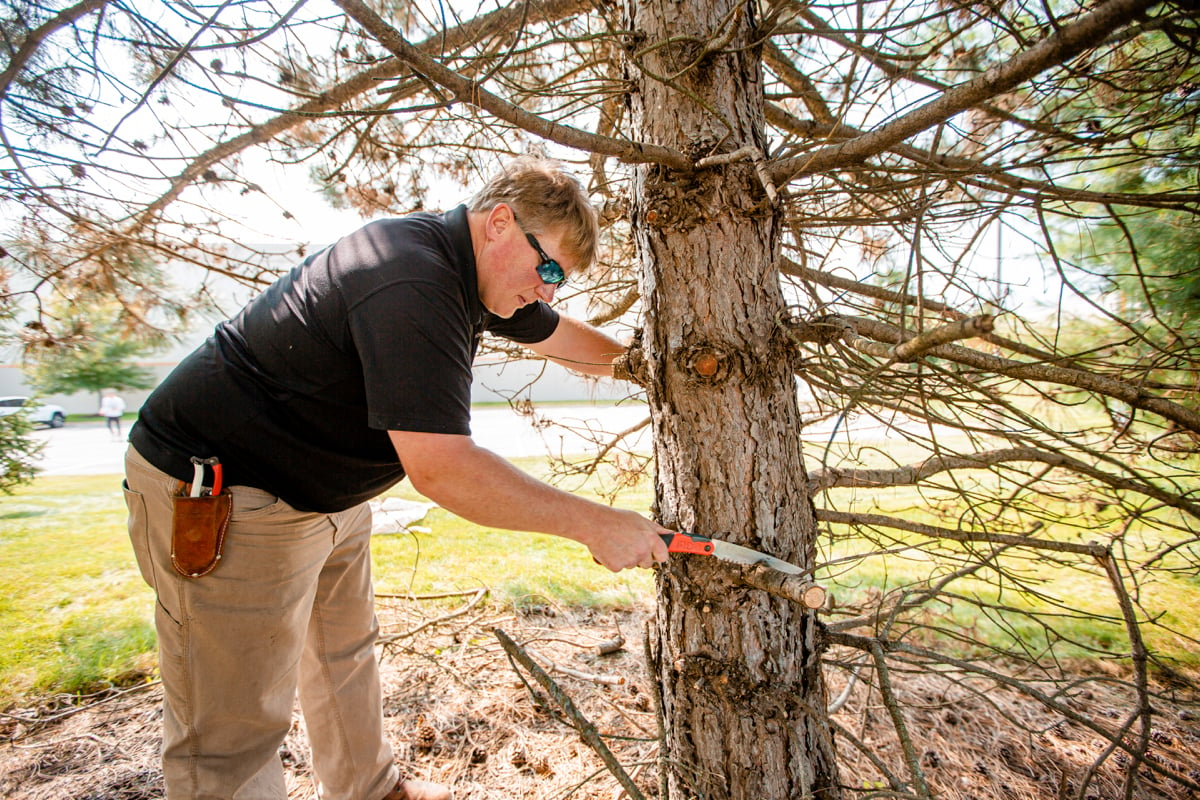
Finally, dormant pruning can save you money because they extend the life of your trees and shrubs leading to less possibilities for removal and replacement costs.
How Can A Northeast Ohio Property Manager Add Dormant Pruning To A Commercial Maintenance Schedule?
Commercial property dormant pruning can be an easy add-on service to your existing commercial maintenance contract.
Often, your grounds management account manager will recommend the service if he or she thinks your plants and shrubs could use the pruning in winter. But you can also request it if you think it might be beneficial to your specific commercial property.
When it comes to cost, dormant pruning pricing usually depends on the size of your commercial facility and the amount of plant material your commercial landscape professional needs to prune. Your commercial landscape professional can come up with a solution to fit your budget if you have numerous trees and shrubs. Turfscape, for instance, has dormant pruned half of the plants and shrubs on a commercial property one year and the other half the next year to help its clients use their budget dollars wisely.

Don’t Forget You Have Dormant Pruning As An Option In Winter
You know you want to take care of your commercial property all year long – winter included.
While it can be easy to forget about the possibility of pruning in winter, knowing it’s an option could be helpful and transformative for your commercial facility.
We know you have a lot of concerns when managing your commercial property. If you find you have questions about dormant pruning or what we can do to help your property in winter, let Turfscape know. We can help answer all of your questions, saving you time, money, and headaches along the way.
Want to learn more about our winter commercial property services in Northeast Ohio, including dormant pruning? Get started today with a free quote. We’ll review your options together so you can feel confident and make a great choice.



